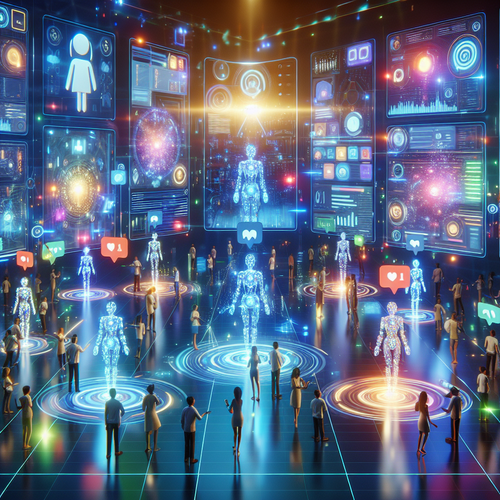
Top 10 AI Chatbots Compared (2025)
Top 10 AI Chatbots Compared (2025)
In the rapidly evolving landscape of artificial intelligence, chatbots continue to play a pivotal role in enhancing user interaction across various sectors. As we dive into 2025, numerous AI chatbots have entered the marketplace, each offering unique features and capabilities. This tutorial provides an in-depth comparison of the top ten AI chatbots available this year.
Prerequisites
To fully grasp the features and advantages of the AI chatbots we will discuss, it’s beneficial to have a basic understanding of:
- Natural Language Processing (NLP)
- Machine Learning principles
- Basic chatbot functionalities
1. ChatGPT-4
Developed by OpenAI, ChatGPT-4 leads the pack with its advanced conversational capabilities. It excels in generating human-like responses and is widely used for customer service.
Key Features:
- Highly accurate language understanding
- Customizable for different industries
- Rich context retention abilities
2. Jasper AI
Jasper AI focuses on content creation and marketing, leveraging AI to generate writing prompts and marketing copy. This is particularly beneficial for businesses looking to streamline their content strategies.
Features:
- Advanced grammar and style adjustments
- Template-based structure for various writing needs
- Integration with other marketing tools
3. Microsoft Azure Bot Service
Microsoft’s Azure Bot Service provides a comprehensive solution for businesses wanting to integrate chatbots into their existing Azure ecosystem. It supports multiple programming languages and frameworks.
Key Features:
- Seamless integration with Azure services
- Rich set of pre-built templates
- Robust analytics for performance tracking
4. Facebook Messenger Bot
Facebook’s Messenger Bot facilitates customer interaction across its platform. This is ideal for businesses active on social media, connecting them with customers in a familiar setting.
Features:
- User-friendly interface for businesses
- Ability to handle multiple inquiries simultaneously
- Analytics tools for engagement tracking
5. Google Dialogflow
Google’s Dialogflow provides a natural language processing platform for developers to build intelligent chatbots. Its integration abilities with various applications help create powerful conversational agents.
Key Features:
- Multi-language support
- Easy integration with Google services
- Rich API documentation
6. Rasa
Rasa is an open-source framework for building contextual AI chatbots. It is particularly suitable for enterprises looking to customize their chatbot solutions with full control over data.
Features:
- Complete data ownership
- Customizable dialogs and workflows
- Active community support
7. Tidio
Tidio combines live chat with AI chatbot functionalities, providing a flexible solution for customer service across e-commerce platforms.
Key Features:
- Real-time customer engagement
- Pre-built messages for common queries
- Simple integration with online stores
8. Intercom
Intercom focuses on customer communication through chatbots and messaging platforms. Its proactive messaging capabilities help businesses engage potential customers effectively.
Features:
- Automated customer support
- Proactive messaging options
- Integration with major CRM tools
9. Drift
Drift specializes in conversational marketing and sales, enabling businesses to engage visitors in real-time and convert leads into customers effectively.
Key Features:
- Capable of scheduling meetings directly
- Lead qualification through AI-powered interactions
- Integration with marketing platforms
10. SnatchBot
SnatchBot is a versatile platform that allows users to build chatbots for any platform. It offers a wide variety of templates and integration options, catering to different industries.
Key Features:
- Multi-channel capabilities
- Rich set of templates for quick deployment
- User-friendly interface for non-developers
Troubleshooting Common Issues
When integrating any AI chatbot, users may encounter issues such as:
- Integration difficulties with existing systems
- Insufficient training data leading to poor responses
- Misunderstanding of user intents
These can typically be overcome by ensuring thorough testing, providing ample data for training, and continuously refining the application based on user interactions.
Summary Checklist
- Select AI chatbot based on business needs
- Ensure compatibility with existing software
- Utilize analytics for ongoing improvement
- Train personnel on deployment and usage
The world of AI chatbots in 2025 offers various exciting options tailored to diverse requirements. Depending on your business model, any of the explained solutions could enhance your customer interactions significantly. For more in-depth insights on AI tools, check out our post on Top 10 AI Tools for Content Creators.













